Guide to Tinker
Fuji89
September 19, 2013
About this Guide

This is my first guide here on DOTAFire. I have been playing Tinker for a couple of years now even in Dota 1. Here, I will be introducing some of the common skill and item builds with perhaps in depth explanations. Please feel free to leave a comment/criticise/or give any suggestions. Thanks everyone and hope this guide is useful to your Tinker play.
Skills
Laser
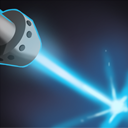 Laser deals pure damage and blinds your opponent for 3 seconds. In most cases, Laser should be max first especially if you are facing only 1 opponent on your lane. The blind acts as a pseudo disable to physical attacks. You can laser your opponent and immediately teleport out provided the enemy has no disable or magical spells to interrupt or kill you. The damage early game is significant, it helps you win your lane so use it constantly to harass them. Although the effect is instant, there appears to be small delay, approximately 0.4 seconds before laser is truly fired. This means if the enemy is at the edge of a fog and you begin casting this skill, it may fail. On the other hand it can be use to trick Nyx
Laser deals pure damage and blinds your opponent for 3 seconds. In most cases, Laser should be max first especially if you are facing only 1 opponent on your lane. The blind acts as a pseudo disable to physical attacks. You can laser your opponent and immediately teleport out provided the enemy has no disable or magical spells to interrupt or kill you. The damage early game is significant, it helps you win your lane so use it constantly to harass them. Although the effect is instant, there appears to be small delay, approximately 0.4 seconds before laser is truly fired. This means if the enemy is at the edge of a fog and you begin casting this skill, it may fail. On the other hand it can be use to trick Nyx
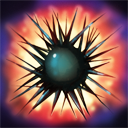 spiked carapace by canceling the ability before it is fired. Note the range is only 550, which means you may need to get close and personal to fire it. You may want to avoid using this ability in clashes and just harass with missiles from afar to maintain range or risk being killed.
spiked carapace by canceling the ability before it is fired. Note the range is only 550, which means you may need to get close and personal to fire it. You may want to avoid using this ability in clashes and just harass with missiles from afar to maintain range or risk being killed.
Laser is blocked by Linken's Sphere

The blind can be dispelled by going magic immune from items such as Black king Bar
 or N'aix Rage
or N'aix Rage

There appears to be a small delay around 0.4 seconds before Laser is truly fired
Heat Seeking Missile

This is Tinker's long range nuke. The skill fires missles on the nearest any 2 heroes within 2500 range. You must have vision over your enemies or no missiles will be fired out and the ability will still go into cooldown and drain mana. Once the missles begin seeking your enemy, it will continue to tail them until hit. However, if the enemy goes invisible or blink, the missiles will miss and no damage is dealt. This is a huge problem to Tinker, as blinkers or invi heroes tend to dodge this spell including Puck's

Phase Shift.
Understanding Reaction Time:
The reaction time is the time between a noticeable incoming projectile, to the time it hits. For example, an incoming Heat seeking Missile to the point it hits a target. If the enemy notices your incoming missile, he/she will be more alert and begins to attempt to dodge the projectile, by either blinking or phase shifting. Note,

smoke of Deceit is also a invisibility triggering item and can be used to dodge an incoming projectile.
This is affected by 3 criteria:
Distance, Vision and Anticipation. Luck is an independent factor so its not counted.
Distance - the further the projectile needs to travel to hit the target, the easier it is to dodge. You can reduce this by going near the target so the missile would hit them almost instantly.
Vision - The longer the enemy has vision over the incoming projectile, the longer the it is the reaction time. Using your missiles on top of a cliff where you are camouflage by fog or simply cast your missiles in places where enemy has no vision over you. Simply put, you cant dodge what you cant see, if it does occur, that's Luck.
Anticipation - Enemies may anticipate a next attack and be more alert. One good example is Laser followed by missiles. Laser first can increase enemy anticipation and be ready for an incoming missile to follow up. You can reduce anticipation by first missile then Laser. Since Laser is almost immediate, it cant be dodge as easily as missile.
Reaction time is important when you face heroes like

Queen of pain,

Nyx,

Puck,

storm spirit, etc.
Heat Seeking Missiles will not target magic immune units like Black king Bar
 or N'aix Rage
or N'aix Rage
 .
.
Cannot be blocked by
 Linken's Sphere.
Linken's Sphere.
Cannot target Ethereal units such as
 Ghost Scepter or Pugna's
Ghost Scepter or Pugna's
 Decrepify
Decrepify
March of the Machines
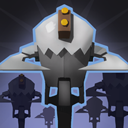
March of the Machines is Tinkers Pushing, Defending, Farming and partial physical offensive ability. This ability is often gotten after both Laser and Heat Seeking Missiles are maxed and at least 1 point into Rearm. However against certain heroes, or if you intend to jungle with Tinker, this ability may instead be max first. More will be discuss in the build section. Note the damage is actually magical which pierces magic immune targets so called 'universal or complex damage type', spell resistance apply but not armor value, so it can hit magic immune targets. This ability requires you to be at the center of the field to be cast. This may put you in a bad position. There is a travel time, roughly 1.5 - 2 seconds before the machines march to the very end of your facing position. Since the machines are spawn behind you, you can face your back and cast so the enemies would be hit almost immediately as they are spawned. If possible, you want to cast multiple marches in the midst of a battle as they deal heavy damage. Do not however risk positioning yourself badly in the center of the battle field or you will be killed instantly. With

force staff, you can quickly get out of the center after using this ability, however it is still sometimes too risky for a fragile hero like Tinker to even remain 1-2 seconds in a center of a battlefield.
The robots will collide to an enemy target, exploding and disappearing dealing the said damage around 150 radius.
The damage is universal or complex type, dealing magical damage but piercing magic immunity.
The robots spawns behind where you are facing and the cover roughly 900 radius.
There appears to be a small cast delay around 0.3-0.5 seconds before the ability activates.
Rearm
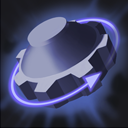
This is Tinker's ultimate and acts like a

refresher orb. This ability resets cooldown of all your skills and certain items. Rearm is why

Boots of Travel makes Tinker a formidable ganker and gives him global mobility. The mana cost starts at 150, then 250 and reach a significant 350 mana cost at level 3. This is a channeling ability and can be interrupted. The effect is only seen after the channeling is completed, regardless it will still consume mana even interrupted! You don't have to necessary max Rearm every time it is available, the mana cost is too significant at early levels. Rearm is often gotten at level 9 when both

lasers and

Heat seeking missiles are max first. Then upgraded at level 14 and so on. You can actually leave it at level 1 and when to level it up depends on weighing the mana cost and the reduce channeling time. There is no point in rearming quickly when you don't even have enough mana to spam your skills anyway and the same goes that you cant chain your skills if your rearm is taking forever.
 Rearm is channeling ability, if interrupted, still consumes mana and not refreshing your cool downs.
Rearm is channeling ability, if interrupted, still consumes mana and not refreshing your cool downs.
Rearm does not refreshes the following:
 Helm of Dominator,
Helm of Dominator,
 Black King bar,
Black King bar,
 Linkens,
Linkens,
 Arcane boots,
Arcane boots,
 Necronomicon,
Necronomicon,
 Hand of Midas and
Hand of Midas and
 Refresher orb. This items are therefore avoided in most cases, except black king bar.
Refresher orb. This items are therefore avoided in most cases, except black king bar.
Item Builds
Starting Items
There are many starting items for Tinker, each having both advantages and disadvantages. Item builds are fluid and a matter of personal preference. Lets take a look in more detail.


(If possible by teammates/supporters)
Your teammates should get a courier and a ward. The ward should be placed at rune spot areas and also gives visibility to heroes up hill on your lane. This is extremely important for rune control and winning your lane. Your missiles requires vision to work.
In a public game, if no one buys ward, you must sacrifice 150 gold for an

observer ward.
Set 1:






This is one of my older generation starting items. Tangoes and Salve helps to replace any health loss while in lane. The 2

mantle of intelligence and 2

iron branches provides 8 INT and 2 STR + AGI. This boost your last hit and deny, even your auto attack harassment. Although it finishes your starting gold, it provides a solid startup in lane which maybe essential against a experienced opponents. The drawback is that you'll need to farm your

bottle from scratch and takes the entire inventory space.
Set 2:
(2 X

)





This provides 2 set of tangoes that can sustain you in lane and perhaps use to cut trees of for juking purposes. The mantle and iron branches effectively boost your damage and survival. Again, you need to farm

bottle from scratch and takes the whole inventory. I tend to use this build nowadays.
Set 3:


The

null talisman takes only one space and provides a boost to all stats, which is great early game. The drawback, only a set of

tango may not be enough to remain in lane against a aggressive opponent (you can use courier to deliver extra tangoes when needed). You'll have to farm

bottle from scratch. Occasionally I go this build.
Set 4:




This is a bottle rush build. The extra 350 gold significantly reduces the downtime to farm for it. It allows fast rune control. It maybe a choice if you are facing melee heroes who are bad at rune control such as

Pudge. However, the lack of stats and just 1 tango means you can still be out-harassed or creep scored by good opponents. I rarely used this build.
Set 5:


Bottle only allows immediate rune control and possibly capturing the first rune spawn in game. This provides no stats at all. You should never go this build. A skilled opponent can last hit and deny the entire creep wave. I have never used this build ever since.
Immediate Items


Your next item should focus on getting a

Bottle and

Boots of Speed.
Core Item

Boots of Travel is a mandatory item on Tinker. Coupled with

Rearm, this unlocks Tinker's ganking potential and gives him supreme global mobility. It must be farm as soon as it is possible. Your enemies would most likely either try to delay or even worse halt your progress from farming this item. The recipe cost 2000 gold and it could be the hardest part of your entire Tinker play in the game depending on the opponents you are facing up against. It is most often achieved at around 11 - 14 minutes. Sometimes it may only be gotten past 14 minute mark if you are heavily pressured early game, especially against more experienced players. Having this item very early in the game can potentially inflict a life threatening migraine to your opponents!
Sustaining Rearm

Rearm at level 1 cost 150 mana,

Soul ring exchanges 150 health for 150 mana. With soul ring you basically get a lvl 1 rearm for free. This is a great item on Tinker even until the end. Rearm refreshes Soul ring.
Escape/Initiation Items
 OR
OR

Your next item should focus on helping you to either escape, initiate or catch up to fleeing enemies. This is either

Force staff or

Blink Dagger. I personally prefer Force staff but its a matter of personal preference. Some even go to the extent of taking both!
Item Comparison

Force staff provide stats; +10 INT which can help to slightly increase your mana pool. It can also be used when taking damage so it is a more reliable tool for mobility during battles. Allows you to re-position your allies or rarely your enemies as well so it not only benefits you. Components are easy and cheaper to assemble. Drawback is that its range is only 800 push and a longer cool down. It is not a form of teleportation and enemies can see the direction of your push.

The blink dagger provides better initiation and longer range coverage. It prevents enemy from predicting your blink since its a form of short range teleportation. It can be used to blink into forest after a boots of travel so you wont be ganked down easily. Drawback, it has no components so you need to save money up. It doesn't provide any stats at all and is silenced if you are taking damage. This item only benefits you.
You can roughly say that Force staff is a more of an offensive tool and the Blink dagger being more defensive. Regardless they both can fulfill both roles. Again, its basically personal preference.
Once you have obtain all these items, your ganking capabilities are increased substantially. The earlier they are gotten, the more dangerous Tinker becomes.
Late Game Items
Your late game items depend on the role you are taking and the enemies you are facing. Roughly they are 3 categories I would like to classify them.
Nuker Tinker
Dagon
 Both Dagondagon and
Both Dagondagon and
 ethereal blade provides extremely high burst damage. The mana cost of dagon 5 is only 100 and with
ethereal blade provides extremely high burst damage. The mana cost of dagon 5 is only 100 and with
 Rearm, it can be cast multiple times. The Nuker build is good against soft enemy lineups as this immediately kills them off. This is also perhaps a more common built in public games.
Rearm, it can be cast multiple times. The Nuker build is good against soft enemy lineups as this immediately kills them off. This is also perhaps a more common built in public games.
Disabler Tinker



 sheepstick is more commonly gotten, but sometimes both sheepstick and
sheepstick is more commonly gotten, but sometimes both sheepstick and
 Eul's are both taken.
Eul's are both taken.
 Rod of Atos is rarely taken, but it does provide a poweful chain slow and also improves your survival for a cheap price. With
Rod of Atos is rarely taken, but it does provide a poweful chain slow and also improves your survival for a cheap price. With
 rearm, these items can be repetitively casted to perma-disable your opponents. Disabler Tinker is better suited if facing a more tanky hero or magic immune lineup. It is also a more common built in higher level games.
rearm, these items can be repetitively casted to perma-disable your opponents. Disabler Tinker is better suited if facing a more tanky hero or magic immune lineup. It is also a more common built in higher level games.
Pusher and Defender Tinker

 Both of these items are great for pushing or defending. They can either help to clear creep waves quickly or to bring down towers.
Both of these items are great for pushing or defending. They can either help to clear creep waves quickly or to bring down towers.
 Manta seems to be better for pushing and
Manta seems to be better for pushing and
 Shiva appears to be better for defending or counter push. If you are rich, both can be gotten for synergistic effect. This build is great against opponents who choose either the pushing or turtling part of the triad. This built is also slightly more common in higher level matches.
Shiva appears to be better for defending or counter push. If you are rich, both can be gotten for synergistic effect. This build is great against opponents who choose either the pushing or turtling part of the triad. This built is also slightly more common in higher level matches.
Chaining your abilities with Rearm
Tinker is famous for his ultimate
 which resets the cooldown of both items and abilities, allowing it to be casted in succession. This forms a chain-ability with very devastating capabilities. We will study this in more detail below.
which resets the cooldown of both items and abilities, allowing it to be casted in succession. This forms a chain-ability with very devastating capabilities. We will study this in more detail below.
NOTE: This section is Technical and can be skipped, but maybe required for those who truly wishes to understand all of Tinker's mechanic. The values given are merely estimates from countless trials and feedbacks from other players. The reference point taken was sheepstick. This section becomes clearer as you play more Tinker games.
Reactive Time, Mana Component and Critical Time Concept
To actually combo Tinker's skill (be it item or his abilities), you need to rearm

everytime they get into cooldown (obviously). You can perform multiple rearms to form a chain of events.
Concept Definition:
Reactive Time - The time interval between one rearm to another rearm is called the Reactive Time. It is affected by modifiable and Delayed timing (Static Timing, Parallel Timing, Distance Time).
Mana Component - The management of Mana in every Rearm interval including the number of chains permitted by mana. (Mana Value, Mana Cycles and Manaplegia)
Critical Time - The time for which the enemy could react during one rearm interval.
Reactive Time [Modifiable & Delayed Timing]
This is calculated when you start chaining your abilities until your next rearm not including the initiation period.
Simple 2 chain example:








Analysing this chain:
{Initation period start}



{end of initiation period but start of Reactive time 1}



{end of Reactive time 1, chain 1 complete}


{chain 2 completed}
If you intend to form chain 3, there will be another rearm interval so another Reactive time 2.
The Reactive Time becomes lower if you can execute your items or abilities quickly. They make the combo smoother, faster and reduce the time it takes to kill the enemy. Long Reactive time means that you have delay in between each cast which could allow your enemies to escape or provide time for enemy reinforcement.
Reactive time is affected by modifiable and Delayed timing. Modifiable timing is your 'fast fingers'. Are you able to quickly press all the hot keys and clicks in short time? Its called modifiable because its the only component in the Reactive time that depends solely on the players skill. It requires practice to lower it down to as minimal as possible.
Delayed timing is a bit complicated but crucial to its understanding. Its basically the part which you cannot modify with your 'fast fingers'. The components are static time, parallel time, Distance time.
Static Time - each ability you cast has a static time to fire. For example

has 0.4s static time,

march of machine around 0.3s and

missiles around 0.1s. If all are casted, the overall static time is 0.8s. Note: Items have a static time of 0.1s.
Parallel Time - a fix estimated time of 0.3s is given for each skill being used be it item or ability. If the same combo is used as above, overall parallel time is 0.9s. Interestingly, parallel Time for items are not entirely constant. It can be reduce to 0.1s if SHIFT queue.
Distance time - If you need to turn around or walk just so your spells are in range to fire, this time is calculated. It can only be 0 if you are directly face to face or lie close to your enemy. Difficult to estimate,

blink dagger has a travel time of 0.1s and

force staff 0.4s.
Assuming you use the combo with perfect modifiable time ZERO and the enemy is face to face:





The Delayed Timing part is 3.1s (static time 0.9 + parallel time 1.2 + lvl 3 rearm 1s).
Significance:
The Reactive time is important as the lower the value means the faster the combo or chain is executed. It makes the combo smoother, less time to kill an enemy and crucially important when calculating critical time(discuss later).
Since items have a 0.1s static time, combo-ing with inventory items such as DagonDagon or
 sheepstick is faster than you active abilities like
sheepstick is faster than you active abilities like
 Laser with static time of 0.4s.
Laser with static time of 0.4s.
Always remember that the more abilities or item you use in one chain, the longer the parallel time and increasing difficulty to reduce the Modifiable time. Ultimately this increases the overall Reactive Time.
Although all these values are small, but when added up, they are significant which could translate to life and death sometimes.
Mana Component [Mana Value, Mana Cycles & Manaplegia]
The Mana Component consist of:
Mana Value - The value of mana usage per damage ratio from items or abilities in each Rearm interval (DMG/MANA). The lower the value means you are using more mana but dealing less damage in one rearm interval and vice versa.
Mana Cycles - The number of chains (cycles) which can be performed until mana is completely depleted (Manaplegia). The higher the mana cycles means you can perform more combo until you ran out of mana.
Manaplegia - The cut off point where the chains are broken or stopped because you lack mana to continue the combo.
Inverse Relationship In Mana component:
Mana Value and Mana Cycles has an inverse relationship. That is, if Mana Value increases, the Mana Cycles decreases.
Mana component relationship to Reactive Time:
Inverse relationship between Mana cycles and Reactive Time. Mana Value is proportionally increased with Reactive Time.
eg: Assuming this combo is used with 2000 maximum mana.



Dagon


In game Effect: Disabled (3.5s) + Total Damage (864) + Mana Consumption (880)
Calculation: Mana Value (0.98); Mana Cycles (2); Reactive Time (3.3s); Manaplegia (Mana at 240).
Discussion: This combo has a high Mana Value, you get to higher damage per mana ratio. With a max mana of 2000, you can only perform this combo twice before manaplegia. The reactive Time is significant 3.3s. This is assumed to have PERFECT modifiable time and distance time of 0s. This is NOT entirely possible in game due to multiple factors, therefore in game you will experienced a longer reactive time than this.
Another combo for comparison still with 2000 maximum mana.



In game Effect: Disabled (3.5s) + Total Damage (0) + Mana consumption (350)
Calculation: Mana Value (0); Mana Cycles (5); Reactive Time (0.8s); Manaplegia (Mana at 250).
Discussion: This combo has 0 Mana value so the damage only comes from your physical attacks or from your teammates source. Because the mana consumption per rearm interval is low, the Mana Cycles is 5 (You can repeatedly chain 5 times until you hit manaplegia). The Reactive Time is very low even if you give allowance for ingame factors. Hypothetically, you can purely disable for 17.5s. The low reactive time and non complex combo makes it significantly easier to execute compared to the first one.
Significance:
The Mana Component is important, as it allows you to either prioritise damage (Mana Value) or number of chains (Mana Cycles) in respect to mana. Some skirmishes, its better to disable an opponent longer or continuously and let your teammates do the damage or prevent enemies from escaping. On the other hand, if you are the only one primaryly dealing the damage (1vs1), its better to choose the first combo. Mana Component and Reactive Time are both crucial in calculating the Critical time.
Mana Component and Items
Mana has always been a limiting factor for Tinker's combo. In short, you would want to deal as much damage or disable in a rearm interval with the highest mana value, get as much mana cycles as possible and increase the threshold of manaplegia. The next question comes; maximum mana? or mana regeneration? Simple, since the mana component is directly related to one rearm interval (in between regeneration from fountain), mana cycles and manaplegia threshold can be increased by maximum mana only. Thus, maximum mana is substantially more important than mana regeneration when the mana component is taking into account.
Critical Time
The Critical Time is an important part to fully understand for Tinker players especially against experienced opponents or slippery targets.
Its considered critical, as miscalculation in certain settings could potentially lead to life and death.
The Critical Time is the difference in time interval between an enemy being fully disabled and the time in one rearm interval OR The time for which the enemy could react during one rearm interval. In other words Critical Time = Disabled time - Reactive Time.
Significance:
A positive Critical Time ensure that your enemy is remained disabled until you have completely rearmed. A negative critical time means that the disable has ended prematurely before you finish executing all your combos and rearm.
Assuming
 sheepstick is use to disable an opponent for 3.5s. Your modifiable time is assumed to be 1s. You need to get nearer to cast your spells and is using
sheepstick is use to disable an opponent for 3.5s. Your modifiable time is assumed to be 1s. You need to get nearer to cast your spells and is using
 force staff to move. Distance travel is 0.4s.
force staff to move. Distance travel is 0.4s.
You will be performing this combo ingame:



 Dagon
Dagon


Note: Assuming you are robotic, you can issue all these commands in ONE second. (It is not possible for me), then the modifiable time will become 1s.
Calculation: Static, Parallel and Distance time = 3.8s, Modifiable Time = 1s(PRO!)
Reactive Time = 4.8s; Critical Time = negative 1.3s
The negative Critical time of 1.3s means that the enemy has 1.3s free of being disabled to either escape or retaliate. Other variables affected include: mana value increase, mana cycles decrease.
To increase the critical Time you can use alternate combos:

 Dagon
Dagon


Lets make is more realistic, Modifiable time is taken as 1.5s (Quite good). The Reactive Time is 4.1s, the Critical time is negative 0.6s
This means the enemy has only 0.6s of free disabled interval to react. Heroes who's escape mechanism requires it to target somewhere such as Akasha's
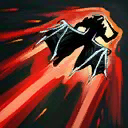 blink or Storms
blink or Storms
 ball lightning may find it hard to escape from you.
ball lightning may find it hard to escape from you.
Opponents with near immediate escape mechanisms or devastating retaliation should have the critical time set to positive value.




This is a simple combo and can be performed with a modifiable time of 1s. The Reactive Time is 3.2s and Critical Time positive 0.3s.
Heroes such as Puck's
 phase shift, Weaver's
phase shift, Weaver's
 shukuchi, silencer's
shukuchi, silencer's
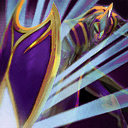 global silence or Naix
global silence or Naix
 rage. A split second for them to react could potentially allow the to escape or retaliate back. This is essential even if it means dealing no damage from your items or abilities. The mana cycles increase but the mana value decreases.
rage. A split second for them to react could potentially allow the to escape or retaliate back. This is essential even if it means dealing no damage from your items or abilities. The mana cycles increase but the mana value decreases.
Lanning
The Tinker often takes the middle lane solo which allows him to farm his Boots of Travel without any competition and quickly. With his offensive capabilities, he can win his lane via constant harassment and rune control. In some games like higher level games, Tinker can solo the safe lane, which is top for Dire and bottom for radiant since one will be a jungler. If you are facing one opponent which is usually mid lane, max
 Laser first as it deals higher damage per mana ratio. On the other hand, if you are facing 2 opponents like top or bottom lane, take
Laser first as it deals higher damage per mana ratio. On the other hand, if you are facing 2 opponents like top or bottom lane, take
 Heat Seeking Missiles as they hit both heroes.
Heat Seeking Missiles as they hit both heroes.
Vision is extremely important for Tinker and therefore
 observer wards are mandatory. The wards should be placed for both defensive and rune control purposes if you are mid and mostly defensive warding if you are taking top or bottom lane. This is essential, the wards allow you to scout for any incoming ganks or to have vision over opponents on top of the cliff. Remember,
observer wards are mandatory. The wards should be placed for both defensive and rune control purposes if you are mid and mostly defensive warding if you are taking top or bottom lane. This is essential, the wards allow you to scout for any incoming ganks or to have vision over opponents on top of the cliff. Remember,
 Heat Seeking Missiles require vision over enemy heroes to work.
Heat Seeking Missiles require vision over enemy heroes to work.
Always be alert when enemy heroes are missing from the map, a gank might occur soon enough and you maybe the target. Tinker is often ganked early to delay or halt his farm for
 boots of Travel effectively shutting him down. Be reminded that observer wards are not entirely gank proof,
boots of Travel effectively shutting him down. Be reminded that observer wards are not entirely gank proof,
 smoke of deceit is an effective way to bypass warded areas unnoticed. Be extra careful when enemy heroes are missing and stay within tower range even if this means loosing some creep score.
smoke of deceit is an effective way to bypass warded areas unnoticed. Be extra careful when enemy heroes are missing and stay within tower range even if this means loosing some creep score.
Specific Heroes
If you have been playing Tinker for some time, you will notice that certain tactics or strategy may need to be employed when facing certain heroes. Often they are a headache to you and are also potentially difficult to overcome at times. We will take a look at some of the common middle lane heroes. To actually win your lane, you need to know how they actually operate, strength and weaknesses. Some heroes can have different builds and you need to quickly analyse and change your strategy almost immediately. Tinker is a good mid lane hero but not entirely great at it too, you'll soon realise there are so many heroes that can do well mid lane.
 Queen Of Pain
Queen Of Pain
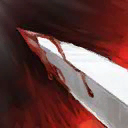


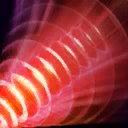
The Queen of Pain is a supreme mid lane hero possessing mobility, single target damage with slow, good attack animation and area spells. She wins her lane via harassing at the beginning with her effective

Shadow strike along with auto attacks and later with

Scream of pain. Her good attack animation allows her to easily score creeps better than you. She has superb rune control, pushing via

scream of pain before every 2 minute mark and moving quickly to rune areas with

Blink.
Her blink
 allows her to dodge any incoming projectile en route to her notably
allows her to dodge any incoming projectile en route to her notably
 Heat seeking missile. Overcome this by reducing the reaction time through anticipation and distance. It is difficult to win rune over Akasha, one way is to head over the rune spawn area and wait before every 2 minute(this may put you in a dangerous position!) and have furion teleporting to the runes that you cant reach. You can go for the conventional build and try to out nuke her. If you are constantly harassed, perhaps switching to the march build and focus on getting
Heat seeking missile. Overcome this by reducing the reaction time through anticipation and distance. It is difficult to win rune over Akasha, one way is to head over the rune spawn area and wait before every 2 minute(this may put you in a dangerous position!) and have furion teleporting to the runes that you cant reach. You can go for the conventional build and try to out nuke her. If you are constantly harassed, perhaps switching to the march build and focus on getting
 as soon as possible. She is notoriously difficult (assuming both of you are equally skilled in play) to lane against and should strongly consider changing lane or skip Tinker.
as soon as possible. She is notoriously difficult (assuming both of you are equally skilled in play) to lane against and should strongly consider changing lane or skip Tinker.
 Butcher
Butcher

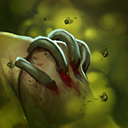

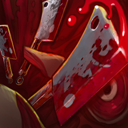
Butcher frequently takes the mid lane in public games, may or may not in higher level games. Regardless, his goal in taking mid lane is to achieve quick levels as soon as possible and begin ganking. He has no form of effective harassment aside from

Meat Hook and

Rot. However they are not entirely reliable, hook requires it to be aimed and rot needs to be in melee range. If he lands a hook or gets you in melee range with rot, he is going for a kill rather than a harass. He has no proper way of rune control, aside from pushing with

Rot before the 2 minute interval mark. Having high str gain makes him tanky and capable of absorbing some of your punishment early.
Being melee is already an advantage to you, harass with
 Laser and auto attacks whenever you have the chance (when he attempts to last hit or deny). Having vision on top of the hill is required to prevent hooks from connecting which may prove to be life saving. Don't let yourself get too near or he may
Laser and auto attacks whenever you have the chance (when he attempts to last hit or deny). Having vision on top of the hill is required to prevent hooks from connecting which may prove to be life saving. Don't let yourself get too near or he may
 Rot and attempt to finish you off. Keyword here is being careful and not to be Hooked. At lvl 6 or 7, he will start abandoning mid and begins ganking so be sure to warn your allies.
Rot and attempt to finish you off. Keyword here is being careful and not to be Hooked. At lvl 6 or 7, he will start abandoning mid and begins ganking so be sure to warn your allies.
 Invoker
Invoker

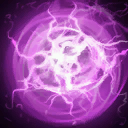


The Invoker uses his reagents to obtain special buffs and invoke a plethora of spells with multiple purposes. Invoker is build based on his investment in reagents.

Quas provides health regeneration while adding Permanent str to mitigate incoming harassment.

Wex provides boost in movement and attack speed increasing his mobility while

Exort increases damage allowing better harassment from auto attacks and last hit or denies. His most common harassing tool is

Cold snap which triggers a ministun for every damage you take. This can work as a from of pseudo disable if his attacks are rapid which can be achieved if Wex is invested more, the so called Quas-Wex combination. Occasionally, a cold snap is followed closely by
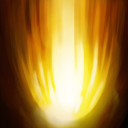
Sun strike which deals pure damage if hits. His good attack animation allows good creep scoring. He takes advantage of Wex movement speed boost to quickly move to a rune spawn location when needed.
Quas invested Invoker is capable of regenerating the health loss quite effectively from your harassment. Early game, he uses his
 cold snap to harass which can be particularly dangerous if you are getting aggroed by creeps.
cold snap to harass which can be particularly dangerous if you are getting aggroed by creeps.
 Laser can blind invoker to prevent him from triggering the freeze but remember that Laser has a cast time of approximately 0.4 seconds which can be interrupted by the ministun. You can time it with his incoming projectile auto attacks. If he is Wex invested, it is best to retreat until the debuff is gone. Beware of a
Laser can blind invoker to prevent him from triggering the freeze but remember that Laser has a cast time of approximately 0.4 seconds which can be interrupted by the ministun. You can time it with his incoming projectile auto attacks. If he is Wex invested, it is best to retreat until the debuff is gone. Beware of a
 Sun strike follow up. You can predict this when the invoke animation is playing. If it is exort invested, he is going to creep score well. Its best to constantly harass him with your nukes. Quas-Wex combination invoker is particularly difficult to overcome, you might need to control runes to keep him in check.
Sun strike follow up. You can predict this when the invoke animation is playing. If it is exort invested, he is going to creep score well. Its best to constantly harass him with your nukes. Quas-Wex combination invoker is particularly difficult to overcome, you might need to control runes to keep him in check.
 Puck
Puck




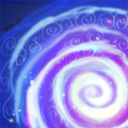
Puck is a slippery hero, harassing and re-appearing with

Illusory orb, silencing with

Waning rift and dodge incoming projectiles with

Phase shift. His main harassing tool is

Illusory orb, if you maintain a far distance and vision over him, you can increase the reaction time allowing you to dodge the orb.

Phase shift allows Puck to easily evade your missles. He can control rune by either pushing with

Illusory orb before the 2 minute interval or using it as a displacement with

ethereal jaunt to quickly reach a rune if needed.
 Laser should be max as it deals high damage and non-dodgeable. Since shift is instant cast,
Laser should be max as it deals high damage and non-dodgeable. Since shift is instant cast,
 heat seeking missile is unlikely to hit unless the reaction time is dramatically reduce. This means fulfilling all 3 criteria, reduce vision, distance and anticipation.
heat seeking missile is unlikely to hit unless the reaction time is dramatically reduce. This means fulfilling all 3 criteria, reduce vision, distance and anticipation.
Outworld devourerHarbinger
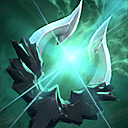
 Essence Aura
Essence Aura
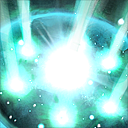
The Harbinger ensures his survival in lane by stacking

Astral imprisonment keeping them at bay. This steal intelligence causing the opponent to have reduce mana pool and damage if he is an INT hero such as Tinker while increasing his damage improving his auto attacks for either harass and creep scoring. He lacks offensive capabilities early and can only auto attack to harass. He can attempt to deny you from your rune by pausing you with Astral imprisonment and then rush to the rune area.
 Astral imprisonment can severely shut down your harassment and last hitting early game while boosting his. The depleted mana pool can also open you up for ganks. Perhaps going for the march build and aim at farming while controlling runes or calling in to gank on him early. You should reconsider changing the lane or skip Tinker altogether.
Astral imprisonment can severely shut down your harassment and last hitting early game while boosting his. The depleted mana pool can also open you up for ganks. Perhaps going for the march build and aim at farming while controlling runes or calling in to gank on him early. You should reconsider changing the lane or skip Tinker altogether.
 Lanaya
Lanaya




Lanaya negates incoming damages and nukes from

Refraction, disjoint projectiles with

meld, harass by spilling his damage via

Psi blades. Lanaya can control rune at lvl 6 with

Psionic trap granting vision over rune areas or to be used to slow you from reaching them while she rushes for it.
Consider going for the march build as it helps to overcome the damage negating effect from
 Refraction while harassing her and preventing her from getting close to the creeps. Take
Refraction while harassing her and preventing her from getting close to the creeps. Take
 Laser to blind her in case she close in for harassment or to deny her from creeps. Control the rune by pushing with march and sustaining your mana with refilled bottle from runes.
Laser to blind her in case she close in for harassment or to deny her from creeps. Control the rune by pushing with march and sustaining your mana with refilled bottle from runes.
 Heat seeking missile are rather ineffective against her, refraction and meld can both negate and disjoint the projectile. You can reduce reaction time to hit but Laser is still better as it is nearly instant and the blind is useful.
Heat seeking missile are rather ineffective against her, refraction and meld can both negate and disjoint the projectile. You can reduce reaction time to hit but Laser is still better as it is nearly instant and the blind is useful.
 Nyx
Nyx

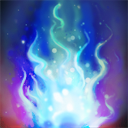


Nyx is a dangerous and difficuly hero to handle for Tinker. He can constantly harass and keep your mana low with both

Impale and

Mana burn. Negate and reflect incoming damage or nukes while stunning the source with

Spiked carapace. He can use impale to push the lane slightly to allow him time to take the runes.
His
 mana burn will leave you low on mana preventing your harassment. To make things worse his
mana burn will leave you low on mana preventing your harassment. To make things worse his
 spiked carapace can negate and reflect while stunning you. Care is needed when using missiles or even lasers or its a nuke back at you. You can bypass this by reducing the reaction time. March is required to control the lane which can also be use to push and allow you to take the runes. In clashes when you cast march, he can ruin your combo or execution by stunning you with carapace. His combo, vendetta-impale-manaburn-(dagon) can kill you instantly.
spiked carapace can negate and reflect while stunning you. Care is needed when using missiles or even lasers or its a nuke back at you. You can bypass this by reducing the reaction time. March is required to control the lane which can also be use to push and allow you to take the runes. In clashes when you cast march, he can ruin your combo or execution by stunning you with carapace. His combo, vendetta-impale-manaburn-(dagon) can kill you instantly.
 sentry ward are important. He may go (blink dagger)-impale-vendetta-manaburn-(dagon) to bypass a warded area. Because of this you should consider skipping Tinker.
sentry ward are important. He may go (blink dagger)-impale-vendetta-manaburn-(dagon) to bypass a warded area. Because of this you should consider skipping Tinker.
 Silencer Curse of the silent
Silencer Curse of the silent
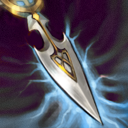


Silencer can effectively harass without aggroing creeps while dealing pure damage with

Glaives of wisdom. Damaging and draining mana with his Curse of the silentcurse of the silent and silencing, damaging and possibly disarming you with

last word. His curse of the silent is extremely effective at stopping you early. You are forced into casting your spells or risk damage and mana drain. Last word can disarm you if you refuse to cast a spell.
Max missiles first in case you need to remove the debuff of Curse of the silentcurse of the silent. Laser has shorter range and silencer can just retreat back if you decide to use this to remove the debuff.
 last word and
last word and
 Global silence can ruin your rearm combo and effectively act as a pseudo disable on a hero like Tinker. Consider skipping Tinker.
Global silence can ruin your rearm combo and effectively act as a pseudo disable on a hero like Tinker. Consider skipping Tinker.
 Storm Spirit
Storm Spirit


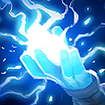

Raijin often takes the mid lane to quickly reach lvl 6 unlocking his ultimate

ball lightning, this gives him nearly unlimited mobility if mana allows while dodging incoming projectiles. He disables and pulls enemy in with his

electric vortex, release

static remnants which provides flying vision or damage on contact while harassing with

overload after casting each spell. Against a range hero, Storm first cast static remnant which gives vision over hill or to gain creep scores while using the charged overload to harass you. Raijin can control rune by pushing with static remnant before 2 minute mark or simply ball lightning to deny the enemy if he truly needs to compete for it.
The storm spirit can only harass you with
 overload or auto attacks before lvl 6. He is relatively fragile and
overload or auto attacks before lvl 6. He is relatively fragile and
 Laser is capable of effectively harassing him. Caution is advice, storm may pull you in to a static remnant via
Laser is capable of effectively harassing him. Caution is advice, storm may pull you in to a static remnant via
 electric vortex if you get too near especially when trying to harass with laser. He is difficult to bring down at lvl 6 due to ball lightning.
electric vortex if you get too near especially when trying to harass with laser. He is difficult to bring down at lvl 6 due to ball lightning.
 Ball lightning can be used to dodge missiles but has a small delay before it activates (0.3 - 0.5seconds). This means anticipation is more important when calculating the reaction time. However, that alone may not work against an experienced storm player who has taken all these factors and often the reaction time is calculated very accurately. Against them, you still need to fulfill the other criteria.
Ball lightning can be used to dodge missiles but has a small delay before it activates (0.3 - 0.5seconds). This means anticipation is more important when calculating the reaction time. However, that alone may not work against an experienced storm player who has taken all these factors and often the reaction time is calculated very accurately. Against them, you still need to fulfill the other criteria.
 Nevermore
Nevermore

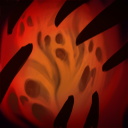


The shadowfiend commonly takes the midlane in pubs, may go mid or solo the safe lane in high level games to quickly farm and gain lvls. Nevermore increases his physical damage from

necromastery, farms quickly by

shadowrazing creeps while dealing heavy AOE damage to his unsuspecting victim via his ultimate

Requiem of Souls. Shadow fiend is extremely reliant on his necromastery to get good creep scores and harasses with his auto attacks and Shadowraze at variable distance in front of him. He can compete the runes by quickly clearing the creep waves with his

shadowraze before the rune spawns and rushes for it.
In the early stage of the game, nevermore often takes one lvl of
 necromastery to boost his physical damage and improving his creep scoring. You should constantly
necromastery to boost his physical damage and improving his creep scoring. You should constantly
 Laser him, which not only deals heavy damage but also blinds him. If he is persistent enough to not stay defensive, use
Laser him, which not only deals heavy damage but also blinds him. If he is persistent enough to not stay defensive, use
 heat seeking missile to finish him of. Since he is relatively fragile, this is an effective way of putting him defensive. At higher lvls, he will try to use his
heat seeking missile to finish him of. Since he is relatively fragile, this is an effective way of putting him defensive. At higher lvls, he will try to use his
 shadowraze either to push the lane and get the rune to sustain his mana, or as a desperate attempt to get last hits. If you can win the rune competition, he is most likely overtly suppressed early to mid game. It is best not to remain too static when trying to harass shadowfiend as they can pull of 2 razes at his attack range.
shadowraze either to push the lane and get the rune to sustain his mana, or as a desperate attempt to get last hits. If you can win the rune competition, he is most likely overtly suppressed early to mid game. It is best not to remain too static when trying to harass shadowfiend as they can pull of 2 razes at his attack range.
 Shadowraze can hit you at variable distance of 200/450/700 range. The first two razes can hit at normal attack range and the last when you're attempting to retreat. Considering both of you are equal in skill, you will dominate the lane most of the time. An experienced shadowfiend player will most probably get into a defensive state and snipe either the creeps or you with his shadowraze. In higher lvl games, a gank maybe called or a lane switch.
Shadowraze can hit you at variable distance of 200/450/700 range. The first two razes can hit at normal attack range and the last when you're attempting to retreat. Considering both of you are equal in skill, you will dominate the lane most of the time. An experienced shadowfiend player will most probably get into a defensive state and snipe either the creeps or you with his shadowraze. In higher lvl games, a gank maybe called or a lane switch.
Final Notes
This is the end of my Tinker guide and it has taken me a significant time to write it. I will update it whenever I can. I really hope you find this guide useful and enjoyed reading this as I enjoyed writing it. Please rate and give me feed backs. I'll accept anything from positive reviews to even criticism or whatsoever you are ever welcome. This will help me improve and possibly write future guides for new players again....err probably not since its soo much work!
Update in progress**
Thanks and good luck in your Tinker play!
 Tango
Tango




































































































Quick Comment (8) View Comments
You need to log in before commenting.